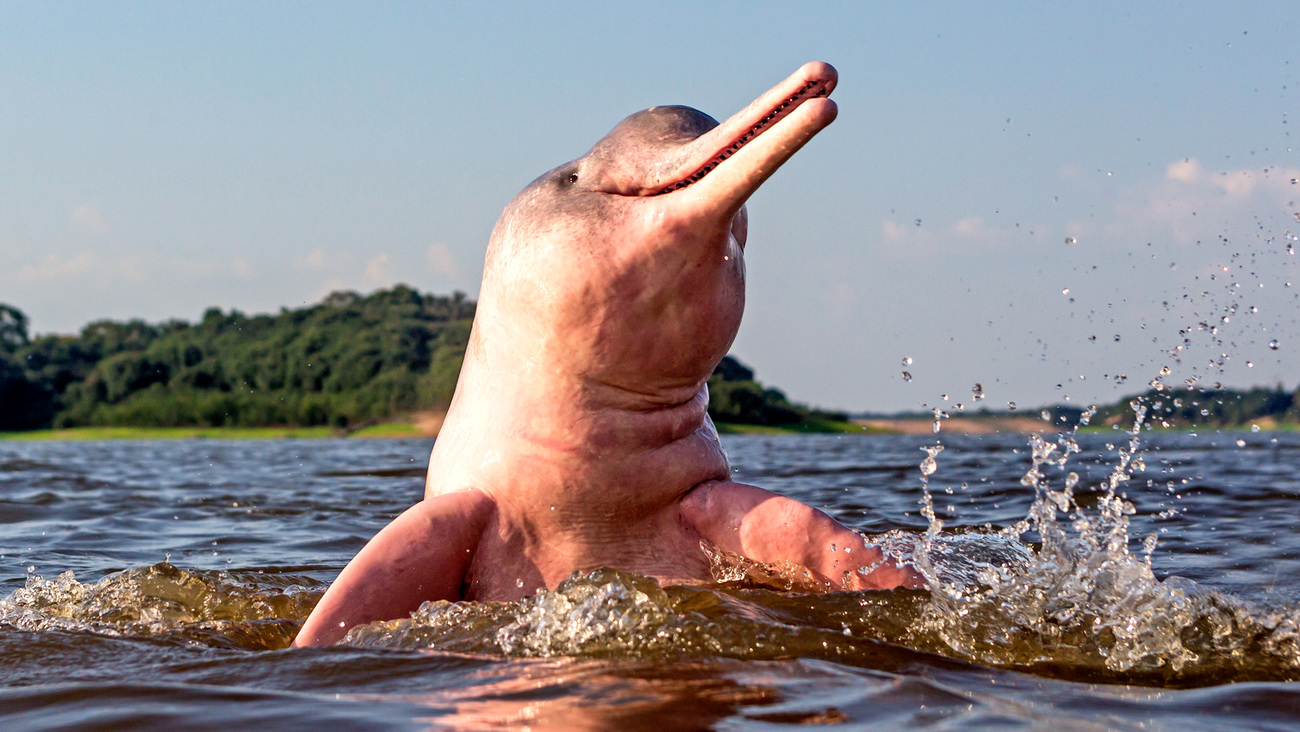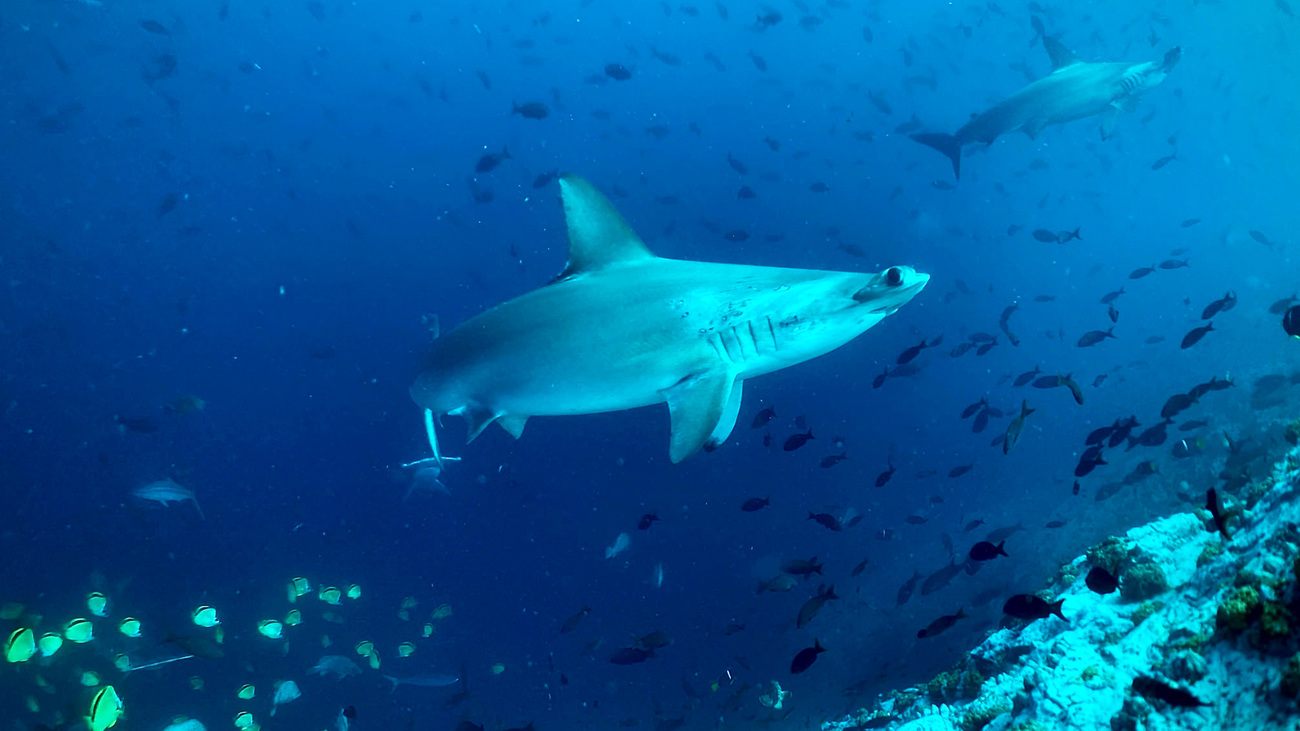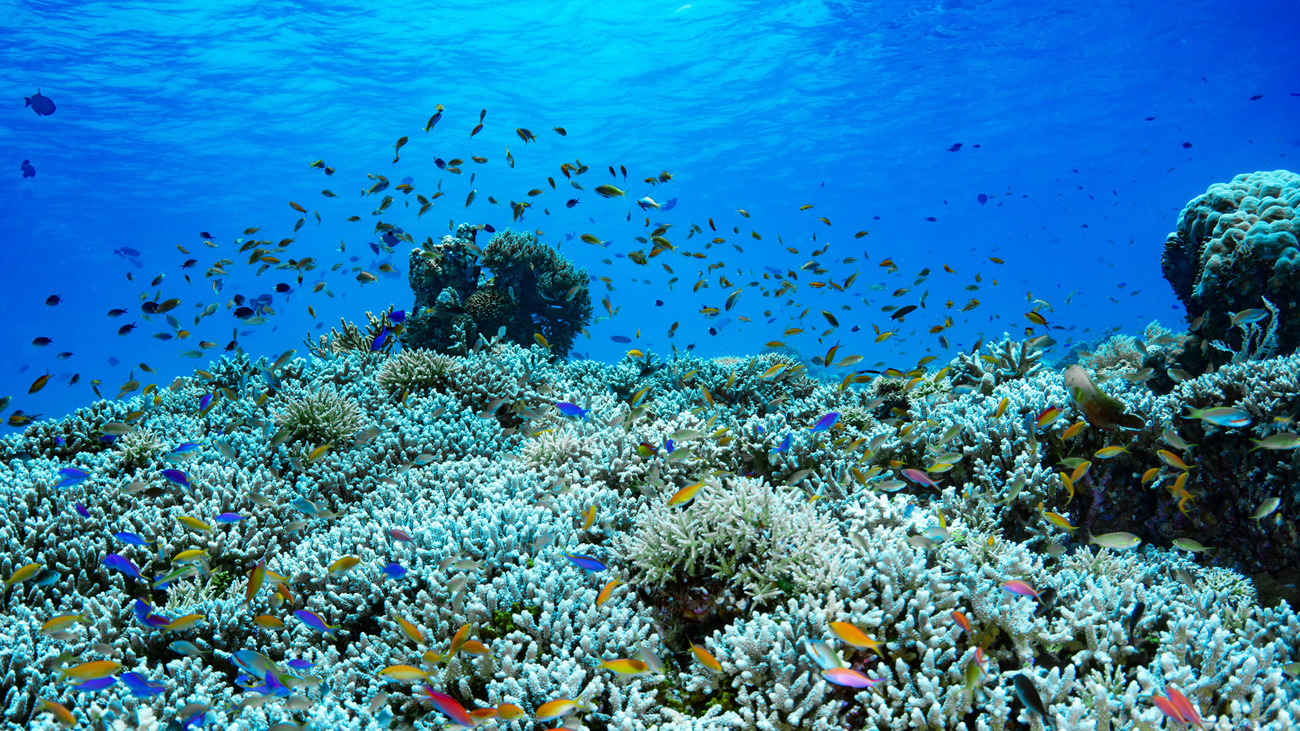How rising water temperatures impact marine and aquatic life
How rising water temperatures impact marine and aquatic life
The effects of climate change are felt all over the world. Some regions are increasingly experiencing extreme weather events like droughts, wildfires, and typhoons, while others are seeing a decline in annual snowfall or an increase in rainfall.
However, the effects of rising temperatures aren’t limited to the land. They also impact the oceans. As ocean temperatures rise, the warm water expands and causes sea levels to rise. The problem is further exacerbated as these warmer waters are melting giant glaciers around the world, raising sea levels even higher. If all the glaciers and ice sheets melted, sea levels would rise by a significant 60 metres (195 feet), causing flooding, coastal erosion, land loss, and more.

Marine heat waves are also triggered by climate change and have doubled in frequency since the 1980s. These temporary but extreme spikes in ocean temperatures can cause mass mortalities for aquatic life, increase the ocean’s acidity, and even disrupt the currents that influence our weather.
Average ocean temperatures have risen by 0.88 degrees Celsius (1.5 degrees Fahrenheit) since 1850. Because water takes longer to heat, this number is rising more slowly than the global average surface temperature, which in 2024, was around 1.28 degrees Celsius warmer than it was in 1880. However, for life in the ocean, small changes in temperature have much more drastic effects.
One of the most alarming things about rising ocean temperatures is how they affect different species in different ways, and how changes in one species trigger a chain reaction that affects many others. Consequences can be difficult to observe, predict, and combat.
In this article, we look at the known impacts of rising temperatures on some of the ocean’s most important animals
Sharks

Sharks are migratory animals that move to warmer waters in winter and cooler waters in summer. With temperatures rising, however, sharks are venturing further and further north to find comfortable waters—entering habitats they previously never visited.
Sharks are invasive to these new habitats. They eat new foods and compete with new species, potentially disrupting the existing food chain. Sharks are also searching for food closer to the coast, increasing the possibility of interactions between sharks and humans.
When the waters around them are warmer, sharks run at higher temperatures and, according to studies, increase their metabolic rates. This makes all activities—from swimming to digesting—more energy-consuming, affecting how often they need to eat and the level of nutrients they get from their food. Experts are also researching the possible effects of warming waters on sharks’ reproductive habits.
Whales
Despite being the largest animals in the ocean, whales feed on some of the smallest creatures—plankton. However, warming waters severely affect the survival rate of these tiny organisms and can reduce their numbers by up to 26%. As such, whales are struggling to find food.
Some whale species are also affected by changes in seasonal ice coverage and thickness, as warming waters cause the ice to melt unpredictably. When beluga whales travel through these icy areas during migrations, for example, they can get trapped in ice, leaving them unable to come up for air or find prey—often, this is fatal.
Higher temperatures can also affect the chemistry of the ocean, elevating the concentration of plastic, chemicals, and other pollutants. These can impact a whale’s immune system and its ability to reproduce. The ocean is also becoming more acidic, changing the way sounds are absorbed in water. As whales communicate through sound, this impacts their ability to hunt, navigate, and talk to other whales.
Amazon river dolphins
Because they live in rivers, Amazon river dolphins are threatened by the extreme weather events that are linked to our warming oceans. In 2023, a mass mortality event occurred for these river dolphins when high temperatures and drought conditions made Lake Tefé intolerable.
Drought conditions drove water levels down and, with less water in the river, temperatures rose even more. It’s thought that the heat put the dolphins in a confused state—similar to heat stroke in humans—and caused them to suffocate. At the time, IFAW assisted in the emergency dolphin rescue, but more than 150 dolphins had already died.
Dolphin species that live in the sea are also affected by rising temperatures—food availability changes, ocean acidity affects communication, temperature affects migration, and severe weather events can carry pollutants and toxins into the waters.
Green sea turtles
As temperatures rise, sea turtles have to migrate further and further to find cool waters for nesting, and the extra strain is tiring out their bodies. The warmer water is also more hospitable for certain parasites and microorganisms, creating higher chances of infection. The decrease in suitable nesting spots and these health strains are impacting reproduction success.
The heat also affects turtle eggs during development, causing an unbalanced number of young to hatch as females. On some nesting beaches, 99% of baby sea turtles are born female. This trend seriously threatens some sea turtle species’ ability to reproduce and survive.
Sea turtles’ food sources are also dwindling, as coral bleaching, a result of warming temperatures, is drastically impacting the seagrass and algae turtles eat.
Salmon
To spawn, salmon leave their river habitats and travel to the ocean. They only reproduce when they reach their destination, even though the journey can span thousands of miles.
However, these fish are incredibly sensitive to temperature and, as waters get warmer, their metabolism quickly increases. This means they require more oxygen to swim well and, when they can’t get it, struggle to reach their spawning grounds. When fewer fish complete the journey, fewer new fish are born, causing their populations to decline.
Decreasing numbers of salmon also affect the species around them—such as the whales, seabirds, and bears that feed on them. Even the trees along the river banks are affected because fewer salmon die in the rivers, passing along their nutrients to the soil.
Coral
The plight of coral reefs is one of the more widely known impacts of the climate crisis. Between 2014 and 2016, 75% of the world’s coral was affected by coral bleaching, turning entire reefs completely white and devoid of algae, an important food source. Unfortunately, 30% of the bleached coral died.

As the average temperature continues to rise and extreme weather events increase in frequency, coral reefs are being put through this ordeal again and again every summer.
Corals survive thanks to nutrients they get from a certain species of algae that live inside them. This algae is their food source and gives them their unique coral colour. But when water temperatures rise, the corals become stressed and expel the algae. As a consequence, they risk starvation and turn white.
Sick or dead coral reefs cause problems for countless other species that rely on them for food and shelter. A loss of coral causes fish populations to decline, which can affect humans too.
Phytoplankton
Phytoplankton are tiny plants that are carried by currents in both fresh and sea water. They’re a hugely important food source for marine life and a hugely important source of oxygen for all life on Earth.
Unfortunately, phytoplankton are incredibly sensitive to temperature change, and many survive better in cooler waters. When they can’t get enough nutrients, they die off, which means less food for many prey species and, in turn, less food for predators.
For example, zooplankton eat phytoplankton, whales eat zooplankton, and all sorts of species feed on whale carcasses on the ocean floor. A reduction in one species can result in less food for countless others.
Seals
When South American fur seals are born, their mothers leave them on beaches while they go out to hunt. With rising temperatures changing the location and availability of food, hunting trips are taking longer and longer.
Because of this, seals are left by themselves for longer and go longer without food, leading to slower growth. It also seems to be stunting their immune systems, which are essential for fighting off hookworms, a parasite that affects all seal pups as they wait on the beaches.
According to studies, these parasites are far more successful during warmer years, killing up to half of South American fur seal pups.
Help protect marine and aquatic life today
Many marine and aquatic animals are feeling the impacts of climate change. To help protect them, we need to support policies and conservation efforts that reduce emissions, safeguard habitats, and prevent harmful human activities in the ocean.
Learn more about IFAW’s marine conservation work and how you can get involved.
Related content
Every problem has a solution, every solution needs support.
The problems we face are urgent, complicated, and resistant to change. Real solutions demand creativity, hard work, and involvement from people like you.